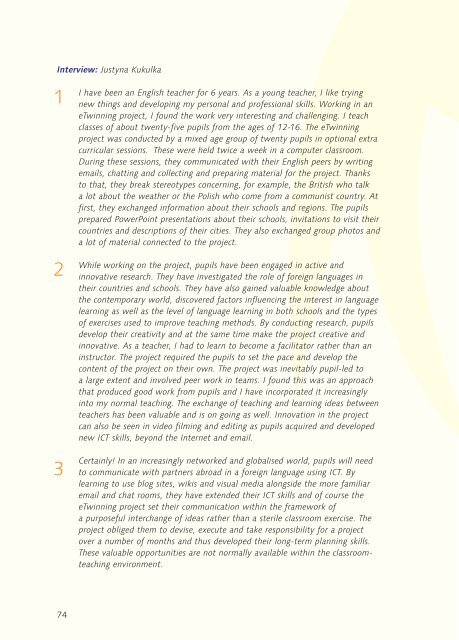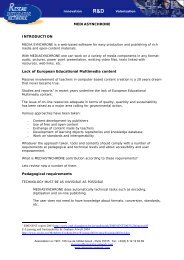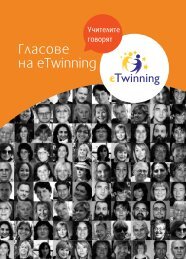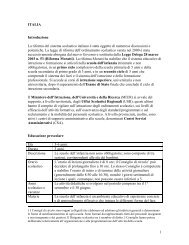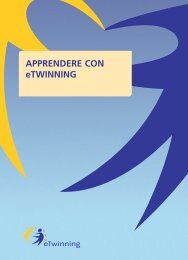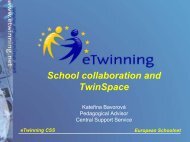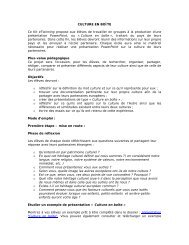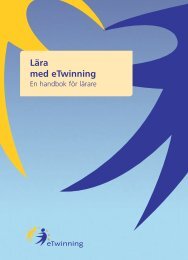Learning with eTwinning - European Commission - Europa
Learning with eTwinning - European Commission - Europa
Learning with eTwinning - European Commission - Europa
You also want an ePaper? Increase the reach of your titles
YUMPU automatically turns print PDFs into web optimized ePapers that Google loves.
Interview: Justyna Kukulka123I have been an English teacher for 6 years. As a young teacher, I like tryingnew things and developing my personal and professional skills. Working in an<strong>eTwinning</strong> project, I found the work very interesting and challenging. I teachclasses of about twenty-five pupils from the ages of 12-16. The <strong>eTwinning</strong>project was conducted by a mixed age group of twenty pupils in optional extracurricular sessions. These were held twice a week in a computer classroom.During these sessions, they communicated <strong>with</strong> their English peers by writingemails, chatting and collecting and preparing material for the project. Thanksto that, they break stereotypes concerning, for example, the British who talka lot about the weather or the Polish who come from a communist country. Atfirst, they exchanged information about their schools and regions. The pupilsprepared PowerPoint presentations about their schools, invitations to visit theircountries and descriptions of their cities. They also exchanged group photos anda lot of material connected to the project.While working on the project, pupils have been engaged in active andinnovative research. They have investigated the role of foreign languages intheir countries and schools. They have also gained valuable knowledge aboutthe contemporary world, discovered factors influencing the interest in languagelearning as well as the level of language learning in both schools and the typesof exercises used to improve teaching methods. By conducting research, pupilsdevelop their creativity and at the same time make the project creative andinnovative. As a teacher, I had to learn to become a facilitator rather than aninstructor. The project required the pupils to set the pace and develop thecontent of the project on their own. The project was inevitably pupil-led toa large extent and involved peer work in teams. I found this was an approachthat produced good work from pupils and I have incorporated it increasinglyinto my normal teaching. The exchange of teaching and learning ideas betweenteachers has been valuable and is on going as well. Innovation in the projectcan also be seen in video filming and editing as pupils acquired and developednew ICT skills, beyond the Internet and email.Certainly! In an increasingly networked and globalised world, pupils will needto communicate <strong>with</strong> partners abroad in a foreign language using ICT. Bylearning to use blog sites, wikis and visual media alongside the more familiaremail and chat rooms, they have extended their ICT skills and of course the<strong>eTwinning</strong> project set their communication <strong>with</strong>in the framework ofa purposeful interchange of ideas rather than a sterile classroom exercise. Theproject obliged them to devise, execute and take responsibility for a projectover a number of months and thus developed their long-term planning skills.These valuable opportunities are not normally available <strong>with</strong>in the classroomteachingenvironment.74


